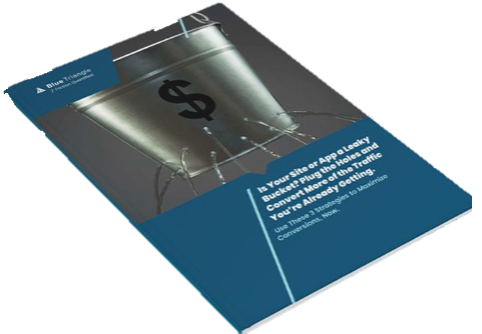Amazon Prime Day, the annual shopping extravaganza exclusively for Prime members, has become a highly anticipated event for millions of online shoppers worldwide.
While consumers take advantage of online deals and discounts, industry experts are watching closely whether it can bring momentum to its slowing eCommerce business. It’s like the canary in the coal mine for retailers and eCommerce sites, and an indicator how they may fare during Black Friday Cyber Monday (BFCM).
A Brief History of Amazon Prime Day
Originally introduced in 2015 as a celebration of Amazon's 20th anniversary, the first Prime Day lasted 24 hours, spanning 9 countries. More than 34.4 million items were ordered, with 398 items checked out per second – that's more items than on Amazon’s Black Friday 2014.
Since then, Amazon Prime Day has grown into a massive global phenomenon. 2022 was Amazon's biggest Prime Day event, with Prime members purchasing more than 300 million items across more than 20 countries. That's more than 100,000 items per minute!
Successes and Challenges of Amazon Prime Day
Amazon Prime Day has undoubtedly achieved remarkable success, with its record-breaking sales, growth of Prime memberships, and promotion of Amazon's products. However, the event has not been without its share of challenges.
1. Record-breaking Sales.
Undeniably, one of the major successes of Amazon Prime Day has been its ability to generate staggering sales figures. Year after year, Amazon has reported impressive sales growth during the Prime Day event. The enticing discounts and exclusive deals have driven millions of Prime members to shop, resulting in billions of dollars in revenue for the company. The event's success is a testament to Amazon's ability to create a sense of urgency and excitement among consumers. However, cracks are emerging in Amazon’s retail business.
2. Technical Glitches and Website Issues.
With millions of customers flocking to Amazon's website during Prime Day, the massive influx of traffic often leads to technical glitches and website slowdowns. In past years, users have reported difficulties accessing deals, experiencing slow page loading times, and encountering errors during checkout. These points of friction can frustrate customers and cost Amazon millions in lost revenue.
3. Inventory and Stock Shortages.
As Prime Day becomes increasingly popular, the demand for certain products often outstrips the available inventory. Customers may find that the highly coveted deals on popular items sell out within minutes, leaving them disappointed. Inventory and stock shortages can undermine the perception of Prime Day as a truly rewarding shopping event and can be disappointing for customers who miss out on desired purchases.
As Prime Day evolves, it will be interesting to see how Amazon and competing retailers navigate these challenges and provide rewarding, frictionless digital customer experiences.
Amazon's Prime Day Tests Consumer Demand
Sales turnout can indicate how consumers will come out for Black Friday Cyber Monday (BFCM) in 2023, a year in which inflation, high-interest rates, and economic concerns have weighed on spending.
Retailers have had to adapt their strategies to compete with Prime Day and meet shoppers' evolving demands. The influence of Prime Day has transformed the traditional holiday shopping landscape, making it a more dynamic and digitally-driven experience for retailers and consumers.
Prime Day has prompted other retailers to launch their mid-year sales events to capitalize on the shopping frenzy. Rivaling retailers, like Walmart and Target, now also hold sales that overlap with Prime Day and are pointedly open to the public.
Amazon Prime Day 2023 Results
Amazon Prime Day has helped spur a new shopping holiday in the middle of July. But can the two-day shopping bonanza keep getting bigger?
Although eCommerce has become less of a focus for Amazon, this year it attempted to woo shoppers with invite-only deals and increased personalization.
Let’s see how those initiatives paid off.
- The first 24 hours of Amazon Prime Day was the biggest eCommerce day this year, driving $6.4 billion in online shopping, up approximately 6% from last year. Across both days, online sales surged to a total of $12.7 billion.
- Consumers are opening their inflation-thinned wallets, tapping into their inner bargain hunters, and stocking up on specific categories such as back-to-school and home goods essentials.
- According to data firm Numerator, the average Prime Day spend per order rose to $54.05 from $52.26 a year ago, and the average household spend was roughly $134.
- Amazon shoppers purchased more than 375 million items during the 2-day event, up from 300 million items sold during last year’s event.
- Some of Amazon's biggest competitors holding their online events didn't see the same growth as Amazon, with softer online sales possibly reflecting lackluster discounts. However, many retailers also ran promotions ahead of Prime Day.
Preliminary findings suggests that consumer spending may be stronger than feared in the face of persistent inflation and economic uncertainty. However, retailers and shoppers are not quite out of the woods yet as final results came in below expectations, and now turn the page to Black Friday Cyber Monday (BFCM).
It's never too early to prepare for Cyber Week.
.png)
During the holiday rush, every shopper matters
Optimize the customer journey before the eCommerce event of the year.

.jpg)

